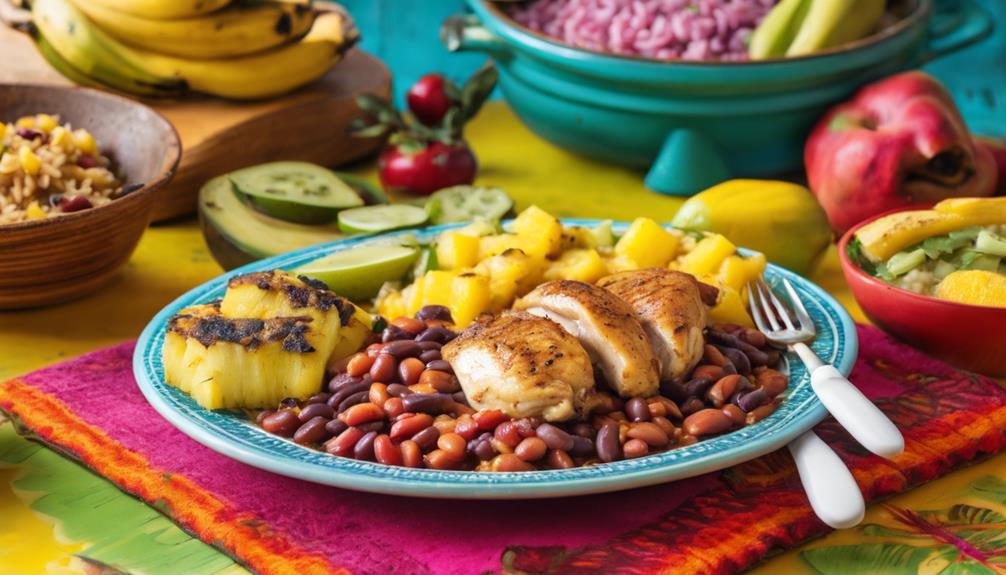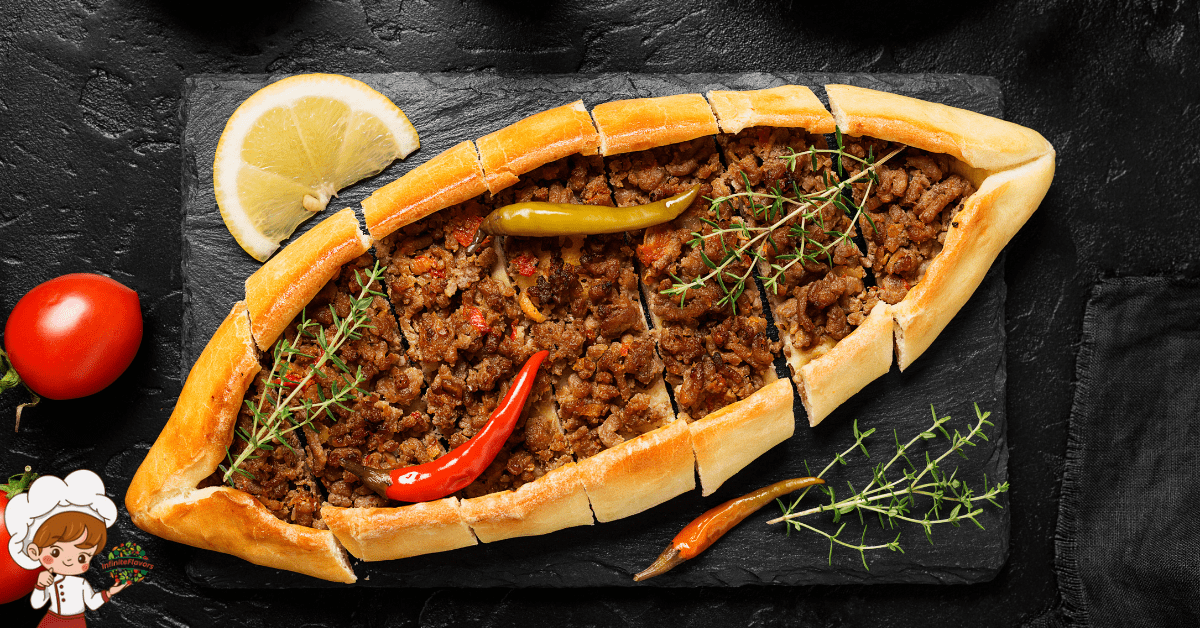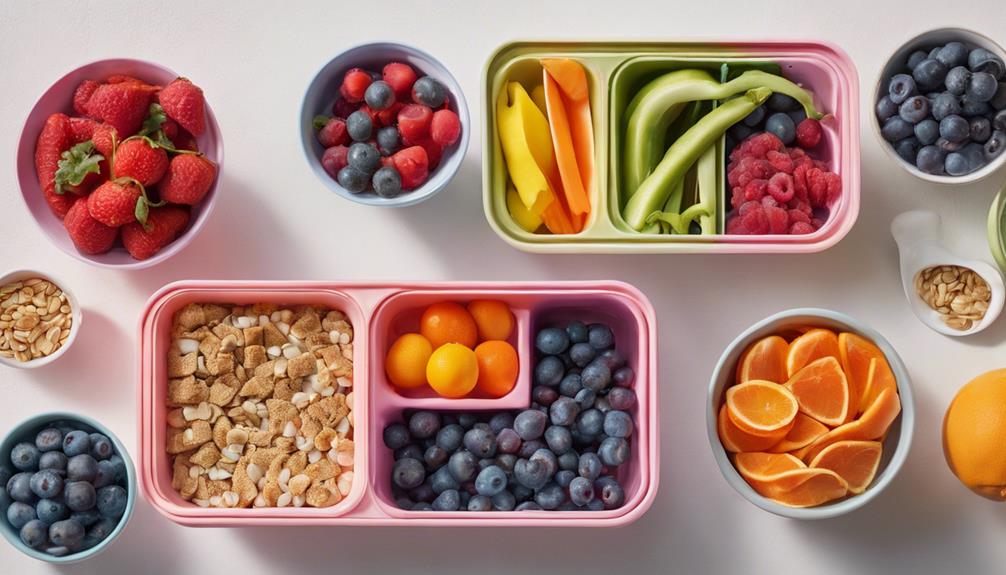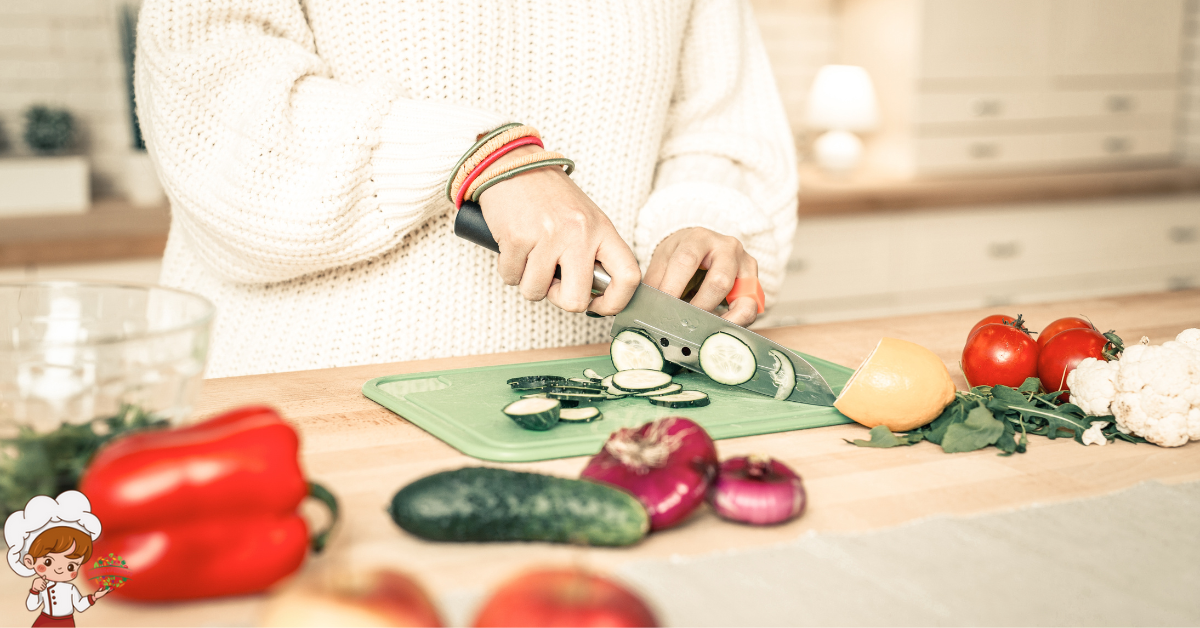Amazing Kid-Friendly Cuban Cuisine: 8 Tips For Picky Eaters

If you’re looking to introduce your picky eaters to Kid-Friendly Cuban Cuisine, start by embracing familiar flavors. Simplify traditional dishes to make them more appealing and involve your kids in the cooking process. Experimenting with textures can also bring excitement to meals. Offering fun dipping options encourages exploration, while colorful ingredients attract their attention. Make cooking an interactive experience with themed nights and friendly competitions. Finally, share the stories behind the dishes to create a deeper connection. These tips can help turn mealtime into a flavorful adventure, and there’s plenty more to discover along the way!
Embrace Familiar Flavors
Kids often crave familiar flavors, making Cuban cuisine a perfect fit for family meals. When you introduce your little ones to Cuban dishes, you’re not just satisfying their taste buds; you’re also creating comfort foods that resonate with many families. Think about classic dishes like arroz con pollo or sweet plantains, which have a delightful sweetness and heartiness that kids usually love.
By embracing these familiar flavors, you strengthen cultural connections that can enrich your family’s dining experience. You can talk about the origins of each dish as you serve them, allowing your kids to appreciate the stories behind the food. This can spark their curiosity about other cultures and traditions, making mealtime not just about eating, but also learning.
You’ll find that many Cuban meals are naturally adaptable. For instance, you can adjust the spice levels in a picadillo to suit your child’s palate. The goal is to create a sense of belonging and comfort around the dinner table. When you serve dishes that remind them of comfort foods, your kids are more likely to try new things that might seem unfamiliar at first.
Simplify Traditional Dishes
When you’re introducing Cuban cuisine to kids, simplifying traditional dishes can make all the difference. Start by using familiar ingredients they already love, then adjust the flavor profiles to suit their taste buds. Finally, modify cooking techniques to keep things quick and easy, ensuring a fun cooking experience for everyone.
Use Familiar Ingredients
How can you make Cuban cuisine more accessible for your little ones? Start by using familiar ingredients to create kid-friendly versions of traditional dishes. You can make the flavors of Cuba appealing by incorporating ingredients your kids already love. For example, if your little ones enjoy chicken, consider preparing a milanesa (breaded chicken cutlet) instead of the traditional lechon (roast pork).
When you use ingredient substitutions, like swapping out black beans for refried beans or using sweet bell peppers instead of more exotic vegetables, you’re simplifying the experience while keeping the essence of Cuban cooking intact.
You can also take favorite dishes, like rice and beans, and tweak them by using white rice instead of the more complex yellow rice or mixing in sweet corn to make it more enticing.
Adjust Flavor Profiles
To make traditional Cuban dishes more appealing for your little ones, adjusting the flavor profiles can be a game-changer. Start by making spice adjustments. Many Cuban recipes include bold spices that might overwhelm a child’s palate. Gradually reduce the amount of spices like cumin, oregano, or black pepper in your dishes. Instead, consider using milder alternatives like garlic powder or paprika for easy flavor without the kick.
Next, focus on flavor pairings. Combine familiar tastes with traditional Cuban ingredients. For example, in a classic Ropa Vieja, you can pair the shredded beef with a sweeter tomato sauce to balance the flavors, making it more enticing for kids. You might also try adding a splash of orange juice to a marinade; the sweetness will appeal to young taste buds while keeping the authentic Cuban flair.
Lastly, don’t hesitate to experiment. You know your children’s preferences best, so feel free to tweak the recipes. By simplifying the flavors while retaining the essence of Cuban cuisine, you’ll create dishes that your kids will love, making mealtime a joy for everyone.
Modify Cooking Techniques
Simplifying traditional Cuban dishes can make them more accessible and enjoyable for kids, allowing everyone to join in on the fun of cooking. Start by modifying cooking techniques to suit younger palates and preferences. For instance, instead of frying, consider steaming vegetables. This method retains their nutrients and gives them a softer texture that’s easier for kids to chew.
You can also explore baking alternatives. Dishes like empanadas can be made healthier by baking instead of frying, resulting in a lighter version that kids might find more appealing. Use whole wheat dough for added nutrition and a different flavor that kids may enjoy.
When it comes to meats, opt for roasting or grilling instead of heavy sauces. These methods can enhance the natural flavors without overwhelming young taste buds. You might also try slow-cooking recipes, which can break down tougher cuts of meat into tender bites.
Involve Kids in Cooking
Involving kids in cooking not only makes mealtime more enjoyable but also helps them develop essential skills and a love for Cuban cuisine. When you bring your children into the kitchen, you’re giving them a chance to learn about cooking and the importance of using fresh ingredients, a hallmark of Cuban dishes. Start by assigning age-appropriate kitchen responsibilities. Younger kids can wash vegetables or measure ingredients, while older ones can chop, stir, or even help with cooking on the stove—always under your supervision.
Before you begin, make sure to discuss cooking safety. Talk about the importance of washing hands, handling knives carefully, and being cautious around hot surfaces. This not only keeps them safe but also teaches them to respect the kitchen environment. You can create a fun safety checklist together, which they can check off as they complete each task.
Encouraging kids to get involved in meal prep fosters their creativity. Let them choose a Cuban dish they’d like to help make, whether it’s a vibrant arroz con pollo or sweet plantains. As they participate, share stories about the origins of the dishes, making the experience more engaging.
Experiment With Textures
When you cook with kids, experimenting with textures can be a fun and educational adventure. Introducing different textures in your Cuban dishes can make meals more engaging and enjoyable for picky eaters. Start by gathering a variety of ingredients that offer contrasting textures. Think crunchy, chewy, creamy, and tender.
For instance, you could combine crispy fried plantains with soft black beans. As you prepare the meal, encourage your kids to touch and feel the ingredients. Have them squish ripe avocados, tear leafy greens, or break apart crunchy nuts. This sensory exploration not only sparks curiosity but also helps them become more comfortable with new foods.
While cooking, discuss the different textures you’re using. Explain how the crispy exterior of a croqueta contrasts with its soft interior. Ask your kids which textures they find appealing and why. This dialogue can encourage them to express their preferences and even try new things.
You can also create a texture chart together, listing foods they like and dislike based on their feel. Use this chart to inspire future cooking sessions, focusing on ingredients that will excite their senses. By making texture a focal point, you’re fostering a sense of adventure in the kitchen and encouraging them to be more open-minded about food.
Incorporating different textures into your Cuban cuisine not only makes meals more dynamic but also helps your kids develop a greater appreciation for the variety of foods available to them.
Offer Dipping Options
Dipping options can elevate your Cuban dishes, making them more interactive and fun for kids. When you introduce a variety of sauces, you give your little ones the chance to explore flavors and textures in a way that’s exciting. Think about a vibrant sauce selection that includes options like tangy mojo, creamy avocado sauce, or a mild black bean dip. Each sauce can transform a simple dish into something special.
Encourage your kids to try different creative dippers. For instance, plantain chips, tortilla strips, or even fresh vegetable sticks can be amazing companions for your sauces. These dippers not only add crunch but also make the meal visually appealing. You might even consider incorporating some traditional Cuban dishes like yuca fries or crispy empanadas for dipping fun.
Let your kids personalize their meals by choosing their favorite dippers and sauces. This not only makes mealtime more enjoyable but also gives them a sense of control over what they eat. If your kids are feeling adventurous, mix and match sauces for an unexpected twist.
Use Colorful Ingredients
Using colorful ingredients not only makes your dishes more appealing but also packs in essential nutrients. Bright vegetables like bell peppers and carrots can bring a fun twist to your meals, while flavorful fruits like mango and pineapple add a rejuvenating touch. Your kids will love the vibrant colors and tastes, making mealtime more exciting!
Bright Vegetables Matters
Bright vegetables can transform any meal into a vibrant feast that kids will love. By incorporating a rainbow of colors on their plates, you’re not just making food visually appealing; you’re also providing a variety of nutritional benefits. Colorful presentations can spark curiosity and excitement, encouraging picky eaters to try new things.
Start with bell peppers, carrots, and zucchini. These vegetables add a pop of color and are packed with vitamins and minerals. Think about roasting a medley of these veggies with a sprinkle of olive oil and a dash of seasoning. The bright hues will catch your kids’ eyes and make them more likely to dig in.
Don’t forget leafy greens like spinach or kale. You can blend them into smoothies or hide them in pasta sauces to make them less intimidating. The key is to mix and match different colors and textures, creating a fun and engaging experience. By showcasing bright vegetables in your meals, you’ll not only enhance the visual appeal but also promote healthier eating habits. Make it a family activity to create colorful dishes together, and watch your kids embrace the goodness of vibrant vegetables!
Flavorful Fruits Appeal
Colorful fruits can be the star of any kid-friendly meal, enchanting young taste buds with their natural sweetness and vibrant hues. Incorporating a variety of fruits into your dishes not only makes them visually appealing but also adds essential nutrients. Think about creating tropical fruit salads filled with mango, pineapple, and kiwi. These bright options will surely catch your child’s eye and make them excited to try something new.
You can also whip up some sweet fruit salsas using ingredients like strawberries, peaches, and even a hint of lime for an exciting twist. Serve these salsas alongside grilled chicken or fish for a delightful balance of flavors. Kids are often more willing to taste foods when they see colorful and fun presentations, so don’t hesitate to get creative.
Mixing fruits into yogurt or smoothies is another great way to boost the appeal. Let your little ones help by choosing their favorite fruits, encouraging them to explore different tastes. With a little imagination, you can make flavorful fruits a regular part of your meals, transforming picky eaters into enthusiastic tasters.
Make It Fun and Interactive
Getting kids involved in the kitchen can turn cooking Cuban cuisine into a fun and interactive experience. Instead of simply preparing meals, you can create cooking games that encourage your little ones to explore flavors and textures. Why not set up a taste test where they can sample different ingredients like mango, plantains, or black beans? This way, they’ll not only learn about Cuban cuisine but also develop their palate.
You can make it a friendly competition by having them guess the ingredients in a dish or rate their favorites. Kids love challenges, and turning cooking into a game can spark their interest. Let them help with simple tasks like washing fruits, stirring sauces, or assembling sandwiches – these little actions can empower them and make them feel like chefs.
Another great idea is to create themed cooking nights. Pick a dish, gather the ingredients, and have everyone pitch in to prepare it together. Whether it’s making Ropa Vieja or Cuban sandwiches, the teamwork will make the meals more memorable. You could even dress up in aprons and play some Cuban music to set the mood!
Share the Story Behind Dishes
Often, sharing the stories behind Cuban dishes can deepen your family’s appreciation for the flavors and traditions of the cuisine. Each dish carries a piece of Cuban history, often rooted in the island’s diverse cultural influences. For instance, you might explain how Ropa Vieja, a shredded beef dish, dates back to Spanish colonial times and reflects the resourcefulness of families using leftovers to create something delicious.
Talk about the cultural significance of dishes like Arroz con Pollo, which brings families together for celebrations, embodying the warmth of Cuban family traditions. As you explore the flavor origins, share how ingredients like garlic, cumin, and bell peppers reflect the Caribbean climate and the island’s agricultural bounty. Your kids will be fascinated to learn that these flavors are not just tasty but tell a story of resilience and creativity in Cuban kitchens.
Encourage your children to connect with these stories by asking them to choose a dish they’d like to learn more about. As they explore its background, they can appreciate the culinary journey it represents. Maybe they’ll discover a family recipe passed down through generations, enhancing their connection to their heritage. Sharing these narratives fosters a sense of pride and curiosity about the rich tapestry of Cuban cuisine. By highlighting the stories behind each meal, you’re not just feeding them; you’re nourishing their understanding of culture and history too.
Frequently Asked Questions: Kid-Friendly Cuban Cuisine
What Are Common Cuban Ingredients That Kids Might Enjoy?
When considering common Cuban ingredients, you’ll find Cuban fruits like mango, papaya, and guava that kids often enjoy. Their natural sweetness adds a flavor balance, making them appealing and nutritious choices for young palates.
How Can I Make Cuban Food More Appealing to Kids?
To make Cuban food more appealing to kids, focus on colorful presentations and fun shapes. Use vibrant ingredients and arrange dishes playfully. Encourage them to help create meals, turning cooking into an exciting activity.
Are There Any Cuban Dishes That Are Completely Vegetarian?
Yes, there are delicious vegetarian options! You can enjoy Cuban black beans paired with flavorful vegetarian rice. Both dishes are nutritious, satisfying, and can easily be spiced up to suit your taste.
What Are Some Easy Cuban Snacks for Kids?
You can whip up some tasty plantains and sweet empanadas for kids. They’re easy to make and delicious, ensuring your little ones enjoy these delightful Cuban snacks while exploring new flavors they’ll love.
Can Cuban Cuisine Accommodate Food Allergies?
Yes, Cuban cuisine can accommodate food allergies. You can make safe Cuban substitutions, like using gluten-free grains or dairy alternatives, ensuring everyone enjoys the vibrant flavors without compromising their dietary needs. You’ll love the options!
Conclusion
By embracing these tips, you can introduce your picky eaters to the delicious world of Cuban cuisine in a fun and engaging way. Simplifying traditional dishes and involving your kids in the cooking process will make them more excited to try new flavors. Plus, colorful ingredients and interactive meals can turn mealtime into an adventure. Remember, sharing the stories behind these dishes adds a personal touch that can spark curiosity and encourage your little ones to explore new tastes.








